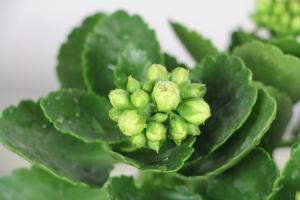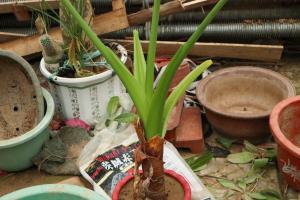Why Are My Tomato Plants Brown on the Bottom?
As a gardener, you expect your tomato plants to thrive and produce juicy, red fruits. However, sometimes you may notice brown, sunken patches forming on the bottom of your tomatoes. This condition is known as blossom-end rot, which can be frustrating and disappointing. Below are some potential reasons why your tomato plants may be suffering from blossom-end rot.
Lack of Calcium
One of the most common reasons behind blossom-end rot is a lack of calcium in the soil. Calcium is vital for the plant to develop strong cell walls and transport water and nutrients throughout the plant. Without adequate calcium, the fruit will not develop properly and will become brown and sunken on the bottom. To prevent this issue, try adding lime or gypsum to your soil to increase the calcium level, and avoid over-watering your plants, as it can cause the calcium to become diluted.
Inconsistent Watering
Another possible reason for blossom-end rot is inconsistent watering. When the soil is too dry, the plants cannot take up enough water to transport nutrients, including calcium, to the fruit, resulting in the development of the brown patches. On the other hand, excessive watering can also cause this condition by washing away the essential nutrients. To prevent this issue, water your plants regularly, aiming for a consistent amount each time.
Excessive Heat and Humidity
In extreme heat and humidity, the plant struggles to regulate its internal moisture levels, which can result in blossom-end rot. High temperatures can also cause the fruit to ripen too quickly, making them more susceptible to the condition. To avoid this problem, mulch around the plants to help retain moisture and provide some shade for the tomatoes during the hottest part of the day.
Pest and Disease Infestations
Finally, pest and disease infestations can cause blossom-end rot. Insects such as aphids and whiteflies can suck sap from the plant, causing it to become weak and unable to transport nutrients. Meanwhile, diseases such as bacterial wilt and fusarium wilt can clog the plant's vascular system, preventing the calcium from reaching the fruit. To prevent this issue, keep an eye out for any signs of pest and disease infestations, and treat them promptly with appropriate methods.
Conclusion
Blossom-end rot can be a frustrating issue for tomato gardeners, but it can be prevented. By ensuring adequate calcium levels, consistent watering, and controlling heat and humidity, you can help your tomato plants thrive and produce juicy, healthy fruits. Keep an eye out for any signs of infestations, and address them promptly to keep your plants healthy and strong.

 how many times do yo...
how many times do yo... how many planted tre...
how many planted tre... how many pine trees ...
how many pine trees ... how many pecan trees...
how many pecan trees... how many plants comp...
how many plants comp... how many plants can ...
how many plants can ... how many plants and ...
how many plants and ... how many pepper plan...
how many pepper plan...































